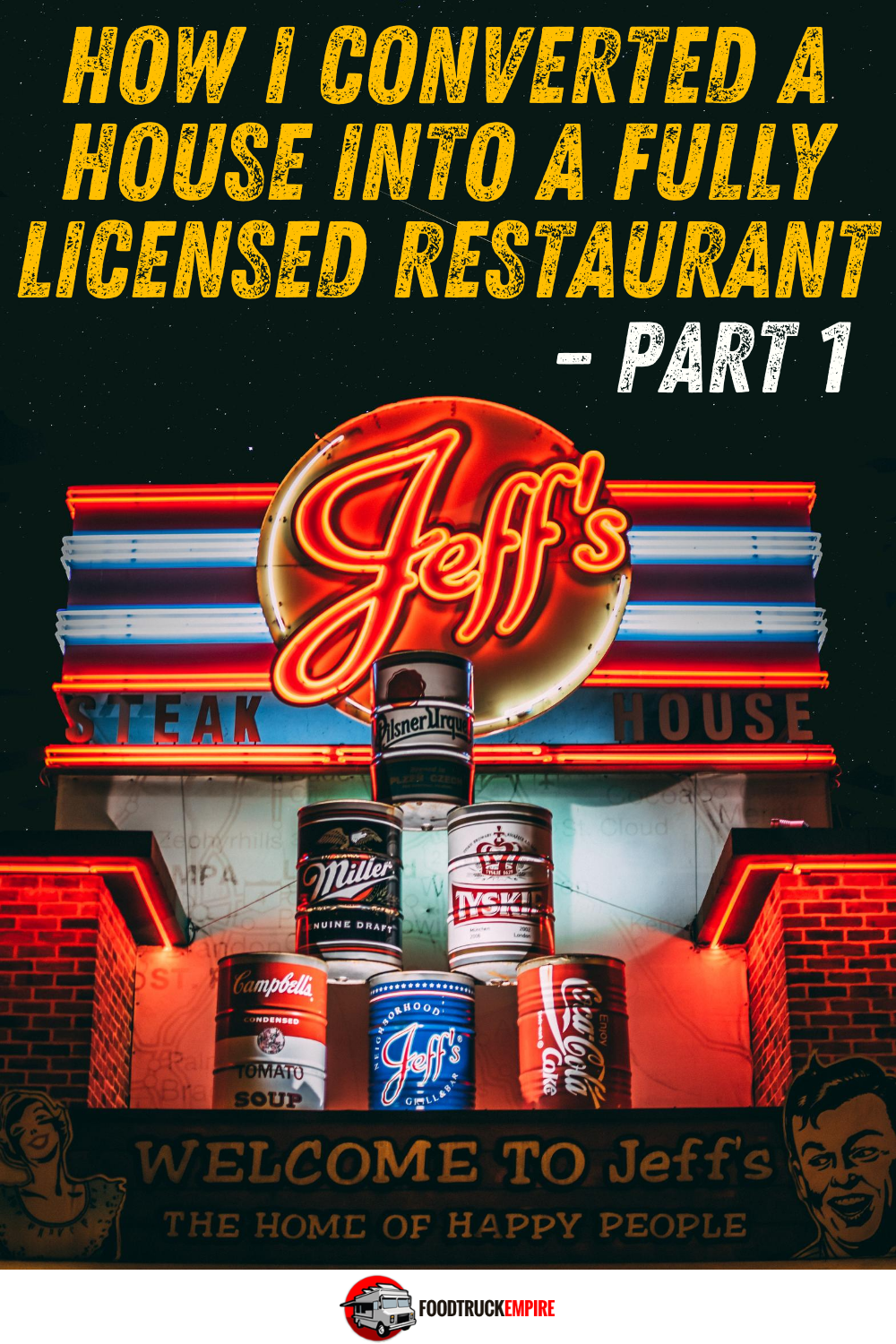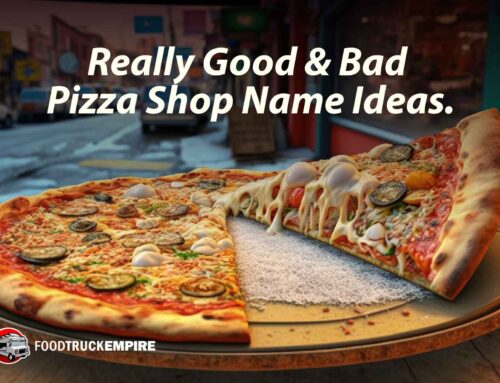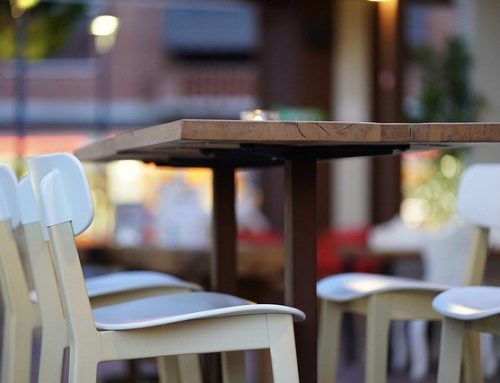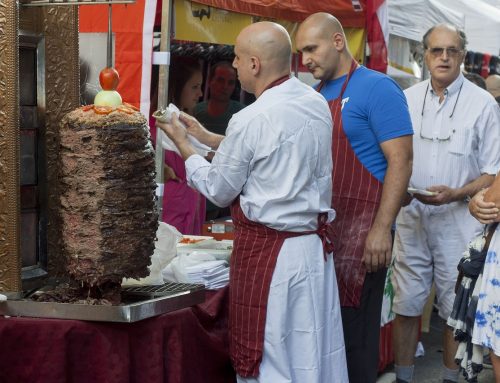A little over two months ago (which is kind of bonkers, now that I think about it), an opportunity presented itself which I had to take advantage of: A house two doors down from where I live, on the corner of a major intersection* with lots of tourist traffic became available for rent.
Because I live in coastal Maine, in this case “major intersection” means “the corner between that one road that goes to the lighthouse and that other road that goes past the dump,” but still.
But first, a bit of background. After successfully crowdfunding a concession trailer back in 2014, I had operated for two seasons in a busy part of Midcoast Maine, an increasingly popular destination for seasonal visitors.
While the truck was successful by some standards, receiving lots of press, awards, and accolades, the inherent limitations of operating a food truck in a cold weather environment had started to frustrate me.
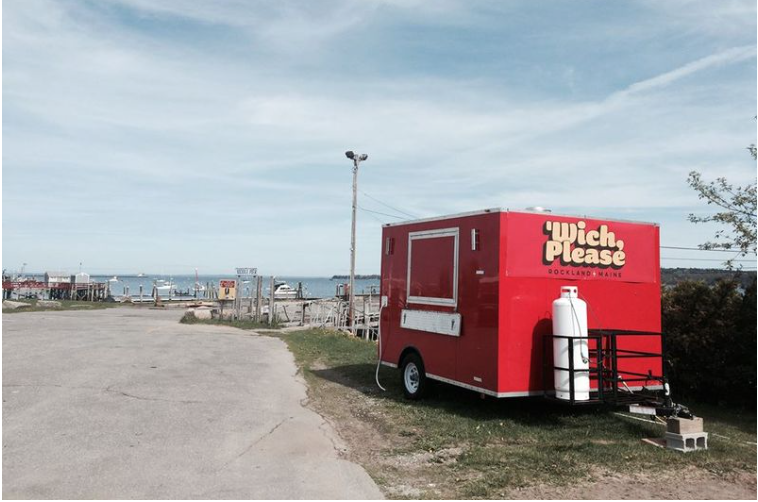
The severe limitations on space meant that I could never buy full cases of product from a wholesaler, because I had no place to store them and instead paid retail prices for many of my ingredients.
Those same space limitations artificially limited growth: Whether I had 50 people lined up outside my service window, or 200, I could only serve the same 50 meals before I’d have to call it a day. And the seasonal aspect of life in a postcard perfect New England town meant that I had very busy Summers…and then no way to sustain that business through the Winter.
Read This Next: How I Converted a House into a Fully Licensed Restaurant – Part 2
Fast forward to June, 2019, which as of this writing, was just a few months ago. My empty food truck sat in my driveway, taunting me, practically begging to be fired up to start making money for the few short months a year that it could here in Maine.
But I had several road blocks in front of me; the city wanted to charge over $3,000 for me to get my spot back in one of the public parks, I had to scrape up money for insurance, buy initial inventory, get propane tanks…as much as I loved my business, a lot of the sheen and charm had worn off, and I was wondering if the whole exercise was worth it, just to enjoy a few months of business in a very hot, and very sweaty tin can.
When my childhood friend and now caretaker of the residential property down the street told me it was for rent, and that the previous tenant had paid per month almost exactly the same amount that the city was proposing to charge for space for my food truck, the wheels started turning.
The leap into brick-and-mortar had always been the underlying goal for my food truck business, and this seemed like the perfect opportunity. Plus, you couldn’t beat the commute. I told my friend I was interested, and he was quick to reply: “Come on over,” he said, “I”ll open it up and let you take a look around.”
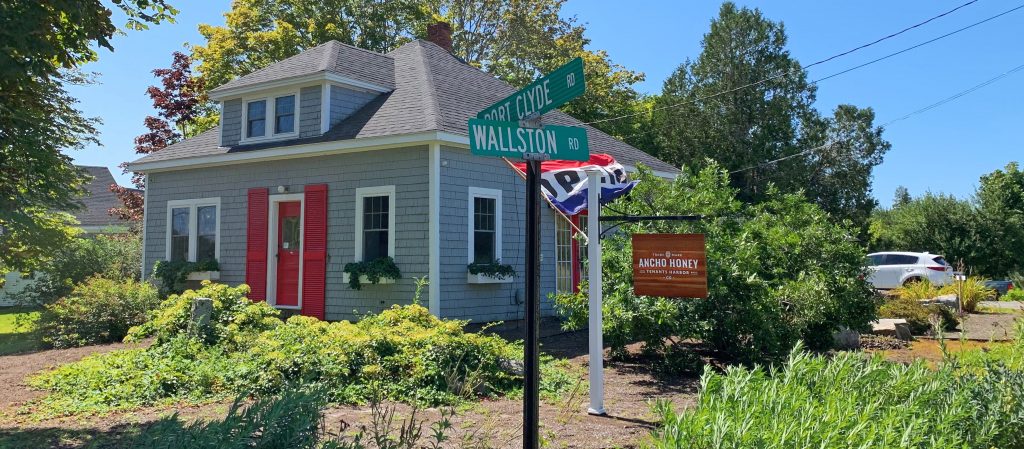
I’d never set foot inside the building, a 100+ year old New England farmhouse that had been host to multiple failed businesses throughout the years. For a while, it was the home to a landscaping company that I’m told also sold a really good cup of coffee.
Someone had tried to sell antiques out of it once, as well as lobster rolls and ice cream. Most recently, it had been home to a fancy cake bakery, the kind of place the carves little penguins out of fondant to put atop a five-year-old’s birthday cake. None of the businesses had worked, and at first glance, I could kind of see why.
The building was…weird. Well, look, not weird if you actually wanted to live there. It’s an adorable house. But as a commercial property, it didn’t make much sense. There are two entrances, both of which lead to tiny rooms with no indication of what to do next. Each room branches out into another room, with no clear flow or path for customers to take.
The kitchen is barebones, at best: No exhaust hood, no fire suppression, no appliances, grease-caked painted wooden floors, and just a single electric stove haphazardly tossed into the corner of the room. And I’m not even talking about a GOOD electric stove; no, this was the kind of slumlord special that landlords put into rental kitchens because they don’t want to waste money on appliances that are going to be destroyed by their sketchy tenants.
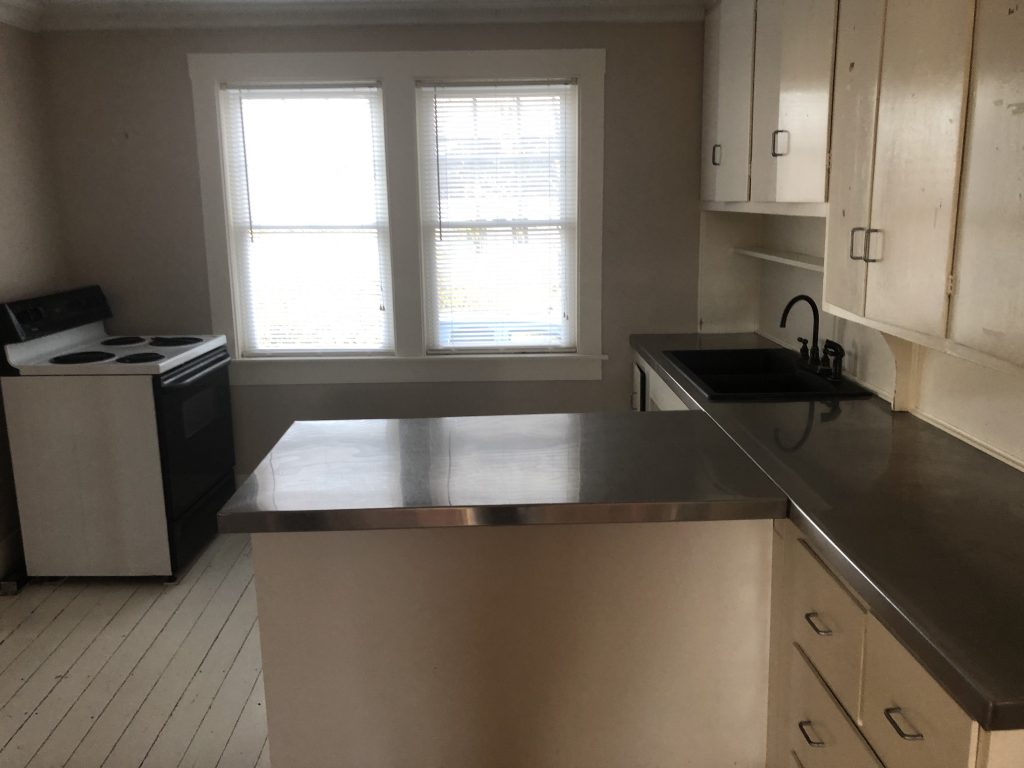
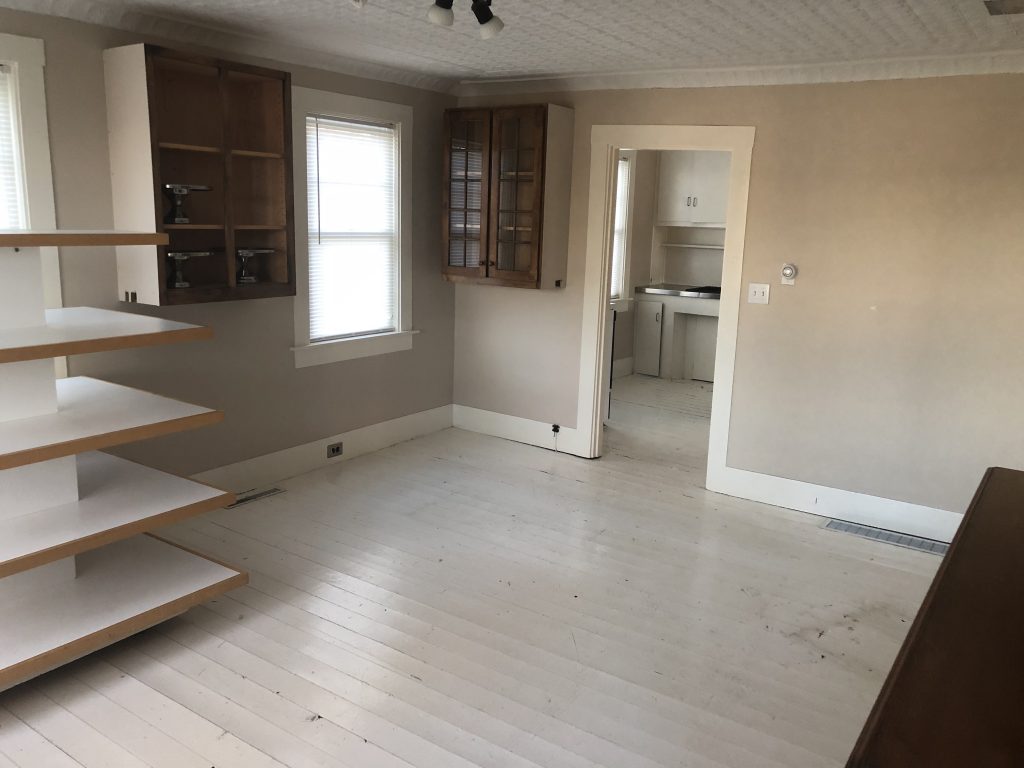
And yet…AND YET. There was so much to love about the place. Decorative moldings throughout, original painted wood floors, a real, honest-to-god tin ceiling in the kitchen and the formal dining room. And some of the major foodservice concerns had been addressed, as well; the kitchen had stainless steel countertops, and there was a three bay sink in the back room, as well as a hand wash sink near the service window where some unlucky teenager had to sit and scoop ice cream all day.
As rough as the space was, as not-at-all-ready to be a restaurant as it seemed, I couldn’t stop thinking about the potential. Sure, it didn’t have any equipment, but it was a start…and as I said, the rent was comparable to what I’d have to spend to park my food truck somewhere. I took a bunch of pictures, shot some video, and thought about it for a few days.
In fact, I couldn’t STOP thinking about it. But if I was going to move, I was going to have to move fast; Summers in Maine are short, and when the leaves fall off the trees, the tourist dollars disappear. If I was going to open to any kind of crowds, I was going to have to jump all over this one.
Phase 1: Locking it down
Because I had no money in the bank to sink into a venture like this, I had to do what little brothers have had to do since the beginning of time: I had to ask my very patient and understanding big sister for a short-term loan to cover my first month, last month, and security deposit.
I hated starting the business in debt, but I couldn’t see any other way to get over that first hurdle. One of the nice things about the food business, is that all you have to do is get the doors open. From that first day, you’ll have cash coming in, so I knew it was just a matter of getting to that first day.
With the lease signed, I spoke to my new landlord about my plans for potential improvements. I didn’t see how the wooden floors with the big, crud-catching gaps in the kitchen would possibly pass a health inspection, but she assured me that it wouldn’t be a problem, and that they didn’t want to lay a linoleum floor in order to “protect the integrity and historical accuracy of the house.”
She then explained that because I was paying so little in rent, I wouldn’t be able to count on the landlord to finance improvements to the structure in order to get it ready for commercial use; any changes I wanted to make to convert the house from residential to commercial use, would be at my own expense. I agreed, signed the lease, and let my brain start running wild with potential changes and improvements.
Phase 2: Renovations
Because both time and money were becoming increasingly short, I had to figure out what I could do to make the house feel more like a takeout restaurant/deli, and organize the interior in a way that would make sense to customers.
The first major decision I made was to focus on only one half of the house; I would close off one of the doorways that led off the main entry room, giving customers a clear path into the next room, where the bulk of our transactions would take place.
I could work on the other half of the house during the slow Winter months, maybe eventually adding a dining room or seating area, but to start, I wanted to have just two main sections to the business: A small retail section to sell house-branded sauces, rubs, and spice blends, as well as the main room, which would feature a display deli cooler for to-go meals and a small counter for customers who wanted to stay and chat while they ate.
An inexpensive piece of pre-finished beadboard, cut to size at my local home improvement store sealed off one of the doorways nicely, provided a clear path for customers upon first entering the shop, and allowed me to narrow my focus on the rest of the work to be done.
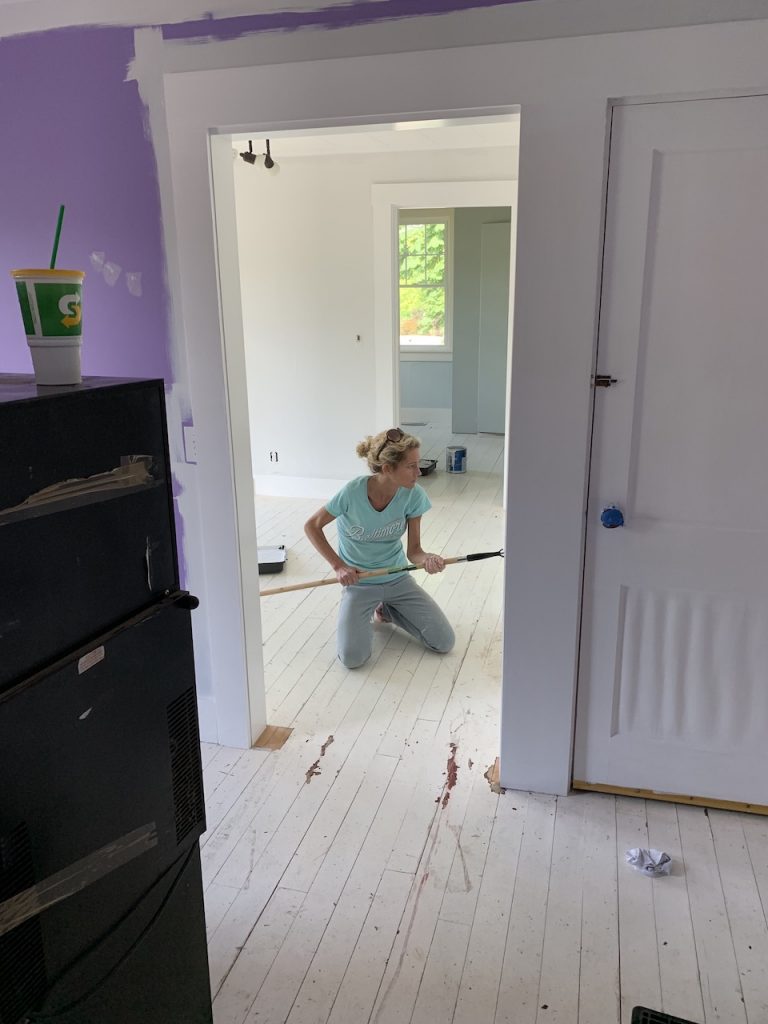
The next step was paint. The existing interior paint was in okay condition, but felt all wrong for the restaurant I was trying to create. The floors where painted white, worn and chipped in high traffic areas. All the trim was cream colored, and the walls were a whole situation unto themselves: A kind of antique beige in the entryway and kitchen, and then, for some inexplicable reason, bright lilac purple in the main room.
That was going to have to change. When choosing colors, I wanted to neutralize everything, make it all flow together as one space, rather than have that funhouse effect of having to confront a different color as you walked from room to room.
I chose a very light gray paint for the walls, bright white for the ceiling and all trim, and because opening your own restaurant means you get to do what you feel like, a striking, very bold blueish green called “Gypsy Teal” for the floors. The floors would become kind of the focal point of the overall space; without room in the budget for artwork or other design elements, I needed one major thing that was really going to pop, and these floors were definitely it.*
*I’m kind of glossing over this part, because I’m not sure how interesting it is, but it should be noted: Painting floors is a major pain in the ass. I used a latex paint with a polyurethane additive to make it more durable, and had to rent an orbital floor sander for the day from the home improvement store in order to rough up the old paint enough for refinishing, then apply three coats of the new paint. All told, the entire painting process took over two weeks, and I never want to do it again.
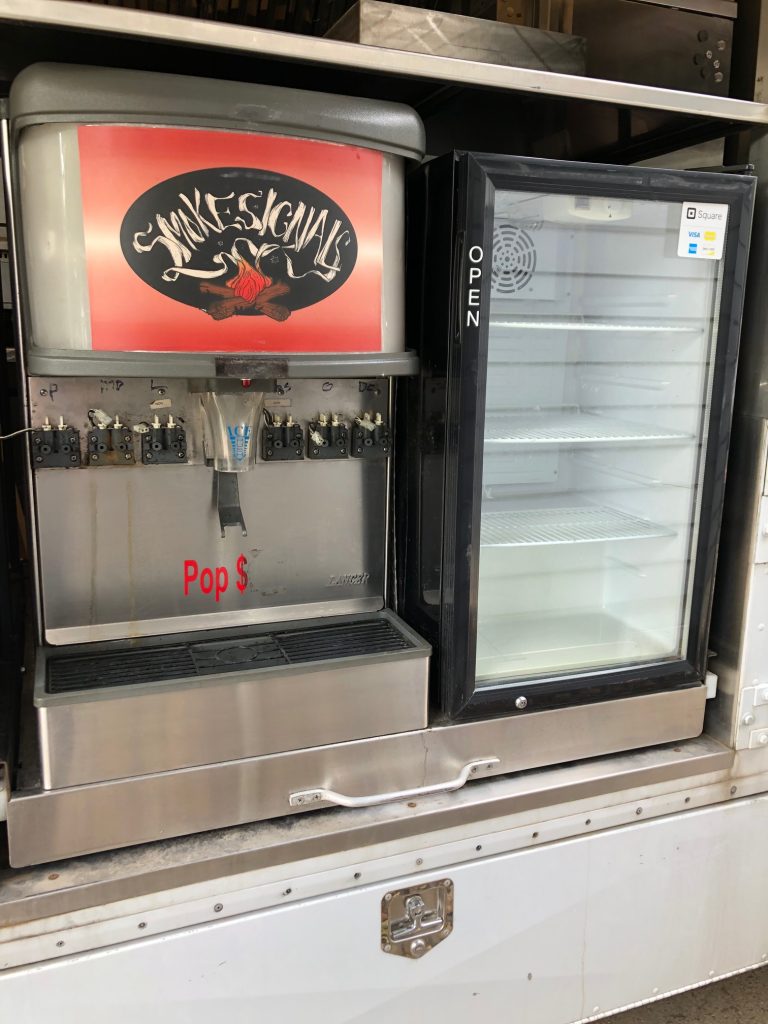
Phase 3: Shaping the Concept and Finding Equipment
There are a few signature items that I’ve tucked into my repertoire in my years in this business, that I knew I could lean on as I shaped the concept for my new restaurant. I make a fried chicken sandwich that has literally won awards, except, nope…no exhaust hood or fire suppression meant no deep fryers.
Oh, but what about my burgers? They’re great, and there’s no dedicated burger places around here…but I would need a flattop, or at the very least, a gas stove.
As I started to mentally calculate the tens of thousands of dollars it would take to get the kitchen up to snuff, and compared these figures with the paltry amount of money in my checking account, I remembered the wisdom of an old friend, a chef who has opened and closed the doors on several restaurants. His advice for anyone getting into this business is simple: Don’t spend any money.
Like, just don’t.
What he means is, instead of going into debt up to your eyeballs to finance the outfit of a brand new kitchen, or taking on investors and giving up equity in your new business before you even know if it’s going to work, before gutting walls for a new walk-in, putting down cash for new state-of-the-art appliances, or sinking thousands into the brand new dining room furniture with the reclaimed barn wood and the brass fittings, just…well, don’t.
Instead of shaping the business to suit your dream concept, shape your concept to fit what you already have to work with. When you get the doors open and get some money rolling through the door, you can expand, shift gears into a new menu, or make major purchases as your cashflow allows. But when you’re just getting started? Don’t spend any money.
I began thinking less about my tried-and-true recipes that I knew would draw a crowd, and even less about what the local dining establishment needed, and more about what I could actually produce. With no staff, no gas lines, little in the way of appliances, and nothing but a janky electric stove shoved in the corner, what could I produce that will still attract attention? Instead of focusing on all the things I didn’t have, what could I make with what I DID have?
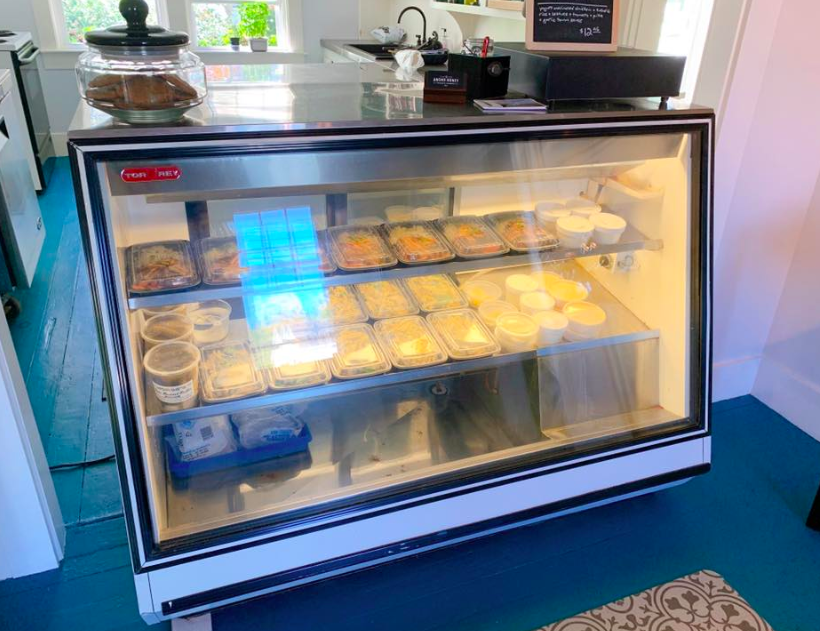
I settled on a sort of hybrid takeout/meals-to-go model, augmented with a fixed menu of grilled cheese sandwiches and hot soups. The sandwiches could be made on electric sandwich presses, the soups held in countertop soup warmers, and would use ingredients that had a long storage life, in case business didn’t go as well as I’d planned.
And operating the business mostly on a take-out model meant that I could run the whole thing with next to no staff. Instead of hiring line cooks and teaching them my recipes, I’d spend a few days cooking each week, assemble the meals into plastic containers, and sell them out of a to-go case. This meant that if business boomed, the only person I’d have to hire would be a kid to make change and hand out meals, while I could stay busy cooking in the background. The place could function like a restaurant, without the stress, long hours, and constant on-the-fly cooking.
Now that I had my concept in mind, it helped me to shape my equipment needs, the bare minimum needed to get me to opening day. I was able to cannibalize some pieces from my food truck; a 24′ sandwich cooler with prep top was the first thing to come out of there, along with various sized prep pans, a cash box, a few pots and pans, and a knife.

But to run a takeout business with all pre-made meals, I’d also need a big display cooler, which start at about $2,600 new, or anywhere between $1,000 and $1,500 used. I kept my eyes on the usual suspects; eBay, Craigslist, and the local classifieds, but finally struck gold on Facebook Marketplace: Some guy out in the middle of nowhere had not just one, but two cheap used display coolers for me to choose from.
It was a weird scene. Rolling farmlands in all directions, with a trailer parked in the middle of it, surrounded by old rusty bicycles. The guy selling the equipment emerged, talking a blue street as he ran around his front yard, flipping waterlogged tarps up off of PILES of restaurant equipment: Multiple refrigerators. Gigantic commercial coffee machines. A full set of honest-to-goodness wooden booths and tables. Oh, and did I need a flattop? What about a cash register or two?
We agreed on a 42″ display cooler, as well as a second 24″ sandwich prep unit. Total price? $500, and for an extra $50, he’d even deliver them. I had no idea if they worked, though the seller assured me that they held temperature.
I didn’t see how they could be stolen, since they were all sitting out in plain sight; I comforted myself with the idea that he must’ve had a failed food venture somewhere in his own personal history, paid cash, got a receipt, and was on my way with a scheduled delivery date in mind.
If there’s a takeaway here, it’s this, since not everyone will be able to count on finding a commercial appliance graveyard in some wild-eyed mountain man’s front yard: Make a rough list of the equipment you need, set some money aside, and then keep your eye out. In this business, there’s always someone nearby that probably has a treasure trove of used equipment, at very reasonable prices. Remember, someone else’s collapsed dream can be your opportunity.
Phew! Let’s take a break. In part two of this post, I’ll detail the favors I called in to get some inexpensive signage for the business, the minor disaster I had to negotiate midstream, as well as the final touches on the lead up to opening day, and the financial day-of-reckoning after our first month in business. Stay tuned!
